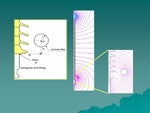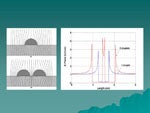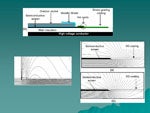Finite Element Method (FEM) is a common method that is used for modeling of insulation systems for determination of the electric field distribution. The method can be used in either the time or frequency domains. The transient finite element method is the best option for fast rise time pulses but efficient algorithms need to be used in order to solve the very non linear problem associated with semiconductive materials that have properties that are both dependent on electric field and temperature. Considerable experience and expertise has been developed in using these methods through various projects that are briefly described below.
Corona rings

Corona from water droplets

Cable terminations
